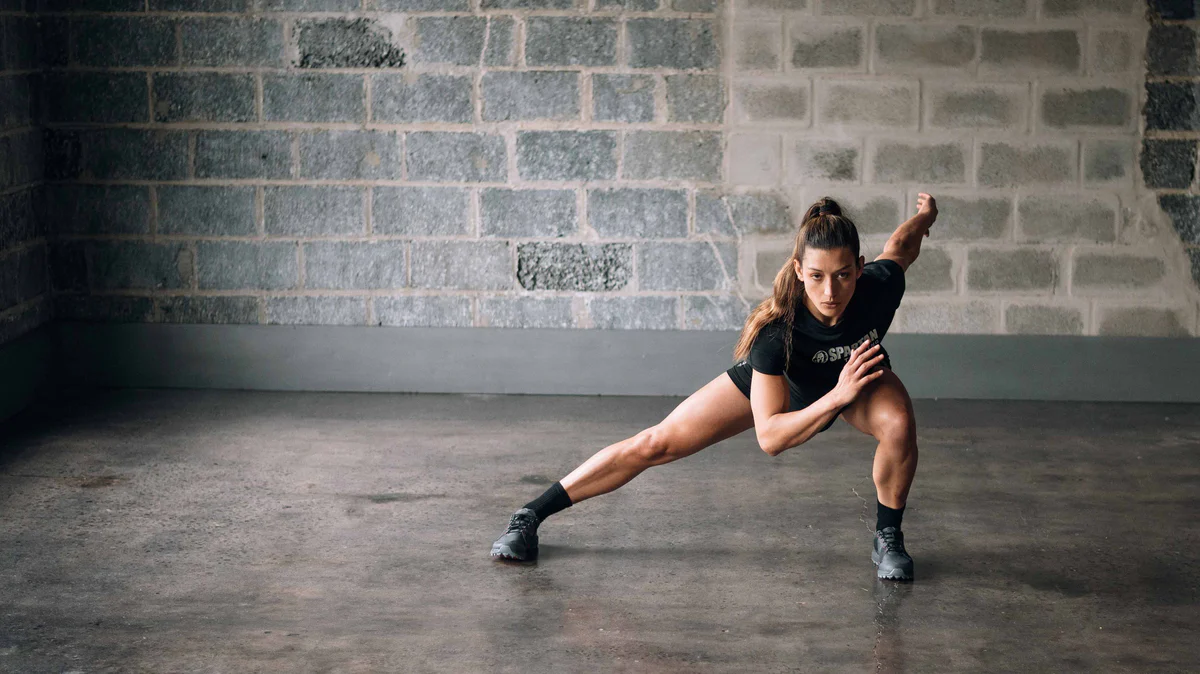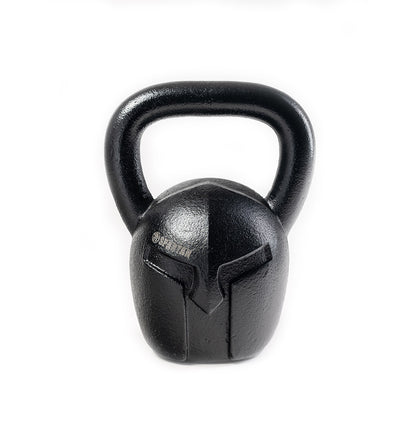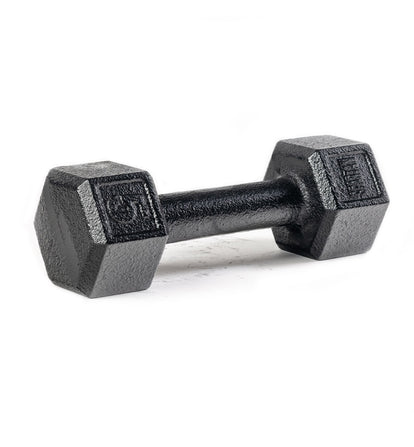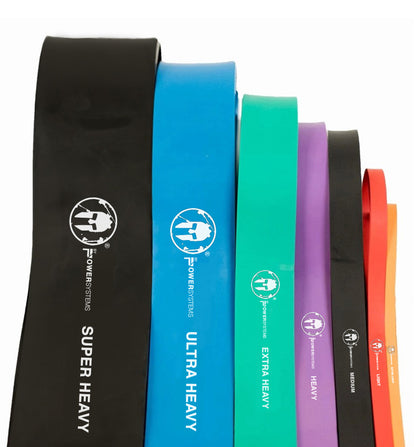The 30 Best Exercises for Functional Strength and Mobility

Obstacle course racers can benefit from putting an extra training focus on functional strength and mobility exercises that will prepare your body for the demands of a Spartan race. That means a combination of strength, endurance, fat loss, and mobility. This comprehensive exercise list will teach you how to do every movement and keep you race ready all year.
These functional strength and mobility exercises are a little different than your typical gym lift: They're not about building the biggest muscles or losing the most fat. Instead, it’s about building a baseline of functional strength and mobility that will allow you to do the other exercises you need to do. For the most part, there will be no heavy weights or brutal cardio.
Let's get after it.
Related: 12 of the Best Bodyweight Exercises for Functional Strength
The Best Functional Strength Exercises
1. Bodyweight Squat
Squats primarily work the quadriceps, which straighten the legs, and the gluteus maximus, which push the hips forward. The lower you go, the more the glutes come into play, so if you’re doing this to build your butt, you’ll want to squat below 90 degrees.
How to do a bodyweight squat:
- Stand with your feet shoulder width apart and pointed forward or angled just slightly outward with your hands to the side.
- Slowly squat down until your thighs are horizontal (or a little bit lower if you can do some comfortable). Bring your hands up in front of your chest or face as you do so.
- Slowly come back up, reversing step 2.
2. 90s Transition
The 90s transition is a simple exercise for improving leg, ankle, and hip mobility, while secondarily warming up the oblique abdominals. It isn’t quite a stretch, but it’s minimally-fatiguing and best utilized as part of your warm-up. The 90s transition is especially good for people with poor hip rotation mobility.
How to do a 90s transition:
- Sit on the floor on your butt with your legs bent in front of you, heels on the floor and toes in the air. Place your hands on the ground slightly behind your torso to support yourself.
- Rotate your hips and feet to the right, such that the right sides of both feet lay against the floor and your whole lower body twists to the right.
- Rotate the other way, putting the left sides of your feet against the floor.
3. Prisoner Get-Up
A simple lower-body mobility exercise, the prisoner get-up builds the ability to get down on the floor and back up using only your lower body, without help from your arms. It mainly works the quadriceps, glutes, and spinal erectors.
How to do a prisoner get-up:
- Stand with your hands behind your head, feet shoulder width apart.
- Kneel down on your left knee.
- Kneel on the right knee as well — both knees now.
- Get off of your left knee so you’re now kneeling on just your right.
- Get off of your right knee and come back up.
Keep your hands behind your head and your torso erect throughout this entire exercise.
4. Jump Squat
Jump squats work the quadriceps and glutes, the same as other squat variant. However, by jumping explosively you build power and engage the nervous system more heavily without as much muscular fatigue as a weighted squat. This makes jump squats ideal for either a warm-up or a less-fatiguing squat variant on days when you know you’re under-recovered.
How to do a jump squat:
- Stand with your hands at your sides and your feet shoulder width apart.
- Squat down until your thighs are at least horizontal and bring your arms in front of your chest.
- Explode upward and jump straight up, swinging your arms down for extra power.
Related: This Is the Best Way to Train, According to 5 Master Coaches
5. Jump Lunge
Jump lunges offer many of the same benefits as jump squats, but with an added element of asymmetry. As such, they also work the gluteus medius (side of the butt) as well as the sides of the thighs, and test your balance more.
How to do a jump lunge:
- Go into a right lunge: right foot forward, left foot back with knee on the ground. Have your right arm up in front of your chest and your left arm back.
- Jump up explosively, pushing off your right heel and the ball of the left foot, and land in a left lunge position, swinging your arms so that your right arm is up in front and your left arm is back.
- Jump up explosively again, pushing off your left heel and the ball of your right foot, landing in a right lunge position.
6. Lateral Lunge
The lateral lunge is an excellent muscle-building or warm-up exercise that works the sides of the quadriceps and the sides of the butt, as well as stretches the inner thighs for greater leg flexibility.
How to do a left lateral lunge:
- Hold your arms clasped in front of your chest and stand with your feet shoulder width apart.
- Step your right leg out to the side, keeping your foot pointed forward and bending your left knee.
- Bring your body down and rest your left arm lightly on your left knee, keeping your hands clasped.
- Slowly come back to the starting position.
7. Reverse Lunge
The reverse lunge works largely the same muscles as other lunge variants, but gives greater involvement to the hamstrings. It’s also a somewhat unintuitive movement that forces your brain to coordinate your body in new ways.
How to do a right reverse lunge:
- Stand with your feet four to six inches apart.
- Step your right leg out to the side, keeping your foot pointed forward and bending your left knee.
- Bring your body down and rest your left arm lightly on your left knee, keeping your hands clasped.
-
Slowly come back to the starting position.
8. Prone Swimmer
The prone swimmer is an arm and shoulder mobility exercise, moving your arms and shoulders through their full range of motion and your wrists through part of their range of motion. It is especially useful for people who have trouble reaching behind their back.
How to do prone swimmers:
- Lay on the floor with your toes and forehead against the floor and your heels pointed into the air. You may want to put a rolled-up towel under your forehead.
- Clasp your hands behind your head.
- Unclasp your hands and reach forward over your head with your hands down.
- Slowly swing your arms out to your sides, keeping them straight.
-
Rotate your hands upward, bring them further down, and clasp them behind the small of your back.
9. Inchworm
The inchworm is a combination resistance and mobility exercise, testing your upper-body strength and endurance, lower-body endurance, and the flexibility of your hamstrings and back.
How to do the inchworm:
- Get into a push-up position.
- Walk your legs up to where your hands are.
-
Walk your hands forward until you’re in a push-up position again.
10. Palm Plank
The palm plank, or push-up-position plank, is a plank variant that is held in a push-up position rather than on your forearms. That makes it easier on your abs and quads, but it engages the arms more. You may find it easier or harder than a normal front plank, depending on the relative strength of those muscles.
How to do a palm plank:
- Get into a push-up position with your palms at shoulder width.
-
Hold that position for as long as possible.
11. Mountain Climber
Mountain climbers are an excellent whole-body combined cardio and bodyweight resistance exercise. They work your arms, legs, back, and core all at once.
How to do a mountain climber:
- Get into a push-up position with your palms at shoulder width.
- Bring your right knee up between your arms, then return your right leg to its original position.
- Bring your left knee up between your arms, then return your left leg to its original position.
Perform steps 2 and 3 quickly, as if running or climbing at a fast pace.
12. Plank Bird Dog
Plank bird dogs are a step up from palm planks, adding an extra level of strength and balance exercise on top of what you get from a palm plank. The asymmetry also brings the oblique (side) abdominals into play.
How to do a plank bird dog:
- Get into a push-up position with your palms at shoulder width.
- Lift your right leg and left arm into the air in such a way that they counterbalance each other, and hold for one second before returning them to their original position.
- Do the same with your left leg and right arm.
13. Hand-Release Push-Up
Hand-release push-ups are pretty close to normal push-ups, except that here, you lift your hands off of the ground for a moment at the bottom of each rep. This forces you to use a full range of motion without relying on momentum, and builds a bit of shoulder blade mobility in the process.
How to do a hand-release push-up:
- Get into a push-up position with your palms at shoulder width.
- Lower yourself to the floor (as in a push-up) until your head touches the floor.
- Lift your palms slightly off of the floor, pushing your shoulder blades back.
-
Return your palms to the floor and push back up.
14. Elbow Side Plank
The elbow side plank is an iso-lateral plank variant that works the obliques (on the side of your abs) more so than the rectus abdomens (on the front). Compared to the hand side plank, it keeps you lower so it’s easier on your arm but provides a harder workout for the abs and outer quads.
How to do a right elbow side plank:
- Lay on your right side, with your feet stacked on top of each other.
- Place your right forearm on the floor, perpendicular to your body.
- Lift your body off of the floor so that your torso is completely straight and only your right forearm and right foot touch the floor.
-
Lift your left arm straight into the air, and hold for as long as possible.
15. Single-Leg Hip Lift
Hip lifts are an excellent exercise for your quads, gluteus maximus, and spinal erectors of the lower back. The single-leg version adds an extra element of balance and brings the gluteus medius, at the side of your butt, into play as well.
How to do a right single-leg hip lift:
- Lay on your back with your knees bent and your arms out to the side.
- Lift your right leg into the air, as straight and vertical as possible.
-
Lift your butt off of the floor and hold for a second before returning to the ground.
16. Kettlebell Deadlift
Deadlifts are one of the best exercises you can do for your lower back and hamstrings. The kettlebell version can’t go super heavy, but it’s easy to do at home and doesn’t risk scraping a barbell against your leg. Since deadlifts are so fatiguing, this is a good one to do throughout the day.
Related: Do This Differently: Improve Your Deadlift With These Pro Tips
How to do a kettlebell deadlift:
- Place a kettlebell onto the floor and stand with your feet on either side of it.
- Bend your legs slightly and push your hips back to grab the kettlebell with both hands.
- Straighten your legs and back (without locking your knees) and stand up straight.
-
Reverse steps 3 and 2, setting the kettlebell on the floor (but not taking your hands off of it) before the next rep.
17. Kettlebell Swing
Kettlebell swings are a high-speed exercise that work the biceps as well as the entire posterior chain — everything from the upper back down to the hamstrings (and even the calves a little bit). They’re a staple at CrossFit gyms, and for good reason.
How to do a kettlebell swing:
- Place a kettlebell onto the floor and stand with your feet on either side of it.
- Bend your legs slightly and push your hips back to grab the kettlebell with both hands.
- Stand up rapidly, squeezing your legs and butt as you do. Allow your arms to swing loosely, remaining straight. The kettlebell should not rise much above the level of your shoulders, as that makes it hard to control.
-
Quickly repeat step 2, allowing the kettlebell to swing down between your legs.
18. Kettlebell Sumo Squat
Squats are an excellent exercise for your quads, glutes, and — to a lesser degree — your back. Kettlebell squats are an easy way to squat at home, but the range of motion can be limited by the kettlebell hitting the floor. The sumo squat avoids this by having you hold the kettlebell up rather than dangling it between your legs.
How to do a kettlebell sumo squat:
- Hold a kettlebell upside down, with your palms under either side of it.
- Stand with your feet wider than shoulder width.
- Squat down until your thighs are at least parallel to the ground.
-
Stand back up, squeezing your butt and thighs as you do.
19. Two-Kettlebell Single-Leg Deadlift
Single-leg deadlifts use lighter weights, working the same muscles as a normal deadlift, but for endurance rather than strength. Since they’re single-leg, however, they are mainly a balance exercise. They also bring the oblique abdominals into action to help prevent torso rotation.
How to do a two-kettlebell single-leg deadlift (left leg):
- Hold a pair of matching kettlebells in your hands, keeping your hands hanging loosely at your sides.
- Stand with your feet together.
- Bend forward at the waist, lifting your right leg and swinging it back to counterbalance yourself until your torso is horizontal.
- Slowly come back to your starting position.
Note: Do every rep on the same leg; do not alternate legs within a single set.
Related: These Three 30-Second Kettlebell Flows Will Test Your Fitness
20. Standing Single-Arm Dumbbell Push Press
This is a single-arm shoulder press variant that uses momentum to help you get over the lowest, hardest part of the movement. It brings the lower body slightly into play, but mainly works the medial deltoid (outside of your shoulder) and triceps.
How to do a standing single-arm dumbbell push press (right arm):
- Hold a dumbbell in your right arm in a shoulder press position oriented front to back, with the back end resting on your shoulder.
- Stand with your feet shoulder width apart.
- Quickly bend your legs slightly, dropping just a few inches.
- Quickly straighten your legs and push up.
-
Quickly return to the starting position.
21. Standing Banded Reverse Fly
Reverse flys are an excellent upper back, chest, and triceps exercise. The banded version can be done anywhere — even while traveling — because bands are so light. Add this one to your travel workouts.
How to do a standing banded reverse fly:
- Take a short loop resistance band (you can also use a long one and double it up) and loop it over your forearms, standing with your feet shoulder width apart.
- Bend 45 degrees at the waist.
- Pull the band apart, trying to bring your forearms to either side of your chest.
- Slowly bring your hands back to the starting position.
Make sure the band is short enough so that when it’s not being stretched, your hands are less than shoulder width apart.
22. Dumbbell Bent-Over Row
The dumbbell bent-over row is an excellent middle back and biceps exercise. Bending over allows you to row at the same angle with dumbbells, while also requiring the lower back to hold your torso in place, as with a deadlift.
How to do a dumbbell bent-over row:
- Stand with your feet shoulder width apart, holding a pair of matching dumbbells in your arms. Bend over 45–60 degrees at the waist and let your arms hang down.
- Bring the dumbbells up to either side of your lower ribs.
-
Slowly lower the dumbbells back down until your arms are hanging loosely.
23. Dumbbell Plank Row
The single-arm dumbbell plank row (not that you could do it with both arms) combines the palm plank, row, and an element of balance a la the bird dog, all in one exercise.
How to do a dumbbell plank row:
- Stand with feet shoulder width apart, holding a pair of matching dumbbells in your arms. Bend over 45–60 degrees at the waist and let your arms hang down.
- Bring the dumbbells up to either side of your lower ribs.
-
Slowly lower the dumbbells back down until your arms are hanging loosely.
24. Dumbbell Sit-Up to Single-Arm Overhead Press
- Grab a pair of dumbbells and hold them over your shoulders, oriented front to back.
- Sit on the floor with your knees bent and your feet on the floor.
- Perform the concentric (upward) half of a sit-up, holding the dumbbells at your shoulders and keeping your feet in place.
- At the top of the sit-up, press one arm straight overhead while holding your torso upright.
- Lower your arm back down to your shoulder.
- Sit back down in a slow and controlled manner until your back and head are on the floor. Try to keep your feet in place.
25. Dumbbell Lat Pull-Over
The dumbbell lat pullover is an easy exercise to do at home that primarily works the latissimus dorsi (middle back) and secondarily works the upper back and triceps.
How to do a dumbbell lat pullover:
- Lay on the ground with your knees bent, holding a dumbbell in both hands by either end. Start with your arms extended straight up in front of the chest.
- Bring the dumbbells up to either side of your lower ribs.
-
Slowly lower the dumbbells back down until your arms are hanging loosely.
26. Dumbbell Chest Press
The dumbbell chest press is simply the dumbbell version of the common barbell chest press. It works the same muscles and is, in some ways, superior since it allows more freedom of movement (albeit at the expense of generally not being able to use as heavy of a weight).
One big advantage of this move is that, unlike the barbell bench press, you don’t need a spotter because the dumbbells can be safely lowered to your sides, so it’s often a better choice for home workouts. It works the pectorals (chest), triceps, and — to a lesser degree — the anterior deltoids (front of the shoulders).
How to do a dumbbell chest press:
- Grab two dumbbells of equal weight and lay on a bench. Begin with the dumbbells held to either side of your chest (roughly level with your nipples) and your forearms vertical so that your elbows are directly below the dumbbells.
- Slowly press your arms upward until they’re completely straight, always keeping your elbows directly under the dumbbells.
- Hold for half of a second.
- Slowly return your arms to the starting position.
-
(Optional) Pause for one to two seconds to work/stretch your chest more.
27. Forward Lunge With Rotation
Forward lunges are a good resistance exercise for the quads and glutes, and a good stretch for the hamstrings. Adding a rotation adds an extra element of stretching the back, biceps and abdominals.
How to do a forward lunge with rotation (left side):
- Start in a normal standing position.
- Take a big step forward with your left leg, twice the length of a normal step.
- Half-kneel so that your left thigh is parallel to the floor and your right knee doesn’t quite touch the floor, and place your right hand on the floor just to the right of your left foot.
- Keeping your feet and right hand in place, rotate your torso to the left and raise your left arm straight up in the air.
-
Slowly reverse steps 4-2.
28. Lateral Bound
The lateral bound is a jumping movement that provides a modest explosive workout for the quadriceps and calves. More than anything however, it builds your balance by practicing hopping from one foot to the other.
How to do a lateral bound:
- Start in a normal standing position.
- Lift your left knee into the air and raise both arms over your head, moving them as needed to stay on balance.
- Using only your right leg, jump as far as you can to the left and land on your left foot with your right knee in the air.
- Using only your left leg, jump as far as you can to the right and land on your right foot with your left knee in the air.
Once you’ve started this exercise, keep your arms in the air the whole time to balance yourself, and try to never be standing on both feet at once.
29. High Knee Sprint
The high knee sprint is a “running in place” exercise that provides a cardio workout similar to jumping jacks, while building leg mobility, explosive strength in the calves, and stretching the hamstrings.
How to do a high knee sprint:
- Start in a normal standing position with your feet at hip width.
- Start running in place but with each step, drive one knee so far up that your thigh is parallel to the ground.
- With each step, swing your arms such that the same-side arm is down. For example, when bringing your right knee up, swing the right arm down and the left arm up.
30. Broad Jump to Backpedal
The broad jump to backpedal is a combination of two exercises: The broad jump is essentially a standing long jump which builds explosive strength in the quads, calves, and glutes, and swinging power and coordination in the shoulders. The backpedal is a simple cardio exercise that builds calf endurance and bodily coordination.
How to do a broad jump to backpedal:
- Start in a normal standing position with your feet at hip width and your arms in front of your chest.
- Quickly drop into a half squat, swinging your arms down behind your butt.
- Jump as far forward as you can. Swing your arms up as you jump to add explosive power.
- After landing, quickly backpedal to your starting position with a series of fast, short steps.





